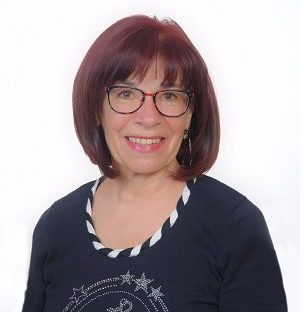
Edna Mrnjavac (born 24th July 1958) is a Full Professor at the Faculty of Tourism and Hospitality Management in Opatija of the University of Rijeka, Croatia. She earned her PhD in 1986 at the Faculty of Maritime Transport of the same university. Her PhD research centered on the optimization of seaport warehouse technology in multimodal transport. Since then, her research work resulted in six books, several book chapters, more than 150 research articles, professional papers, book and article reviews in Croatia and abroad. She successfully led several research projects, Optimisation of System of Croatian Container Ports, Managing Logistics Flows in Tourism Destination and Supply Chain Management in Hospitality (funded by the Croatian Ministry of Science, Education and Sports and the University of Rijeka), to name a few. As member of international project teams, she worked on devising hands-on solutions for traffic, logistics and tourism issues.
Throughout her career she served several managerial functions, such as vice-dean for education (University of Rijeka), head of the University Department for Maritime Studies (University of Rijeka), head of the Institute of Multidisciplinary Fields and head of the Department for Logistics and Tourism Resources (Faculty of Tourism and Hospitality Management, University of Rijeka). She mentored over 170 undergraduate, graduate and doctoral students. As visiting professor, she took part in teaching at undergraduate, graduate and doctoral levels at several universities and faculties in Croatia.
Her research interests include traffic in tourism, traffic management in tourism destinations and supply chain management in tourism, with particular emphasis on sustainability and mobility of traffic and tourism.
More biographical details can be found here: https://www.hatz.hr/en/mrnjavac-edna/
Session on Mobility Modal Shift
Mobility Modal Shift for Sustainable Tourism
When considering the mobility modal shift in the context of tourism, it is necessary to distinguish traffic from the emissive market to the destination and traffic in the destination area itself. At the global level, in 2019 tourists mostly used air transportation (59%) to reach their destination, followed by road (35%), water-based (5%) and railway traffic (only 1%). Expectedly, in the same year the ratios in the EU were somewhat different: car (43%), followed by air (41%), bus 6%, railway 5%, water-based (3%), and other forms of traffic (1%).
In the destination area tourists mostly continue to use the car, because it is the mean of transport, they either arrived with to the destination or were directed to after arriving by plane. Needless to say, such choice of transport modes is incompatible with the commitment to the development of sustainable tourism, and change is necessary.
An increment in tourist journeys is expected in the future, along with the increasing trend of more numerous, but shorter trips. This will result in new segments of tourist demand, which should in turn stimulate the creative offer of tourist destinations, and growth in demand for transport services.
What are the similarities and differences of mobility modal shift between general traffic and traffic as an integral part of tourism?
One of the biggest challenges will be the reduction of emissions in intercontinental tourist/passenger transport in which air traffic dominates, because for now there is no alternative in sight. Although road traffic plays a dominant role in the intracontinental transport of tourists, past experience shows that high quality (fast and frequent) rail transport adapted to the specific needs of tourists can compete very successfully with it.
As expected, the biggest challenges await policy makers and all stakeholders in destinations, where the main goal should be the development of high-quality public transport (fast, frequent and cheap), which would discourage tourists to use cars.
In addition to the above, the concept of mobility has defined several strategies that have proven to be successful – discouraging the use of cars in different ways, maximizing the use of existing traffic infrastructure, a very careful increase in parking capacity for cars, creating conditions for cycling, „small wheels“ and pedestrian traffic, sightseeing by electrical vehicles with access to pedestrian zones, organisational models based on „park & ride“ and „park & walk“ schemes, zoning of destinations, multifunctional roads in tourist zones, expansion of „car free“ zones, focus on informing tourists before arrival at the destination, development of numerous apps for easier mobility in the destination.
The concept of mobility fits into the current concepts of smart tourism and smart destination which are based on: sustainability, technological innovation, information processing and management, involving all stakeholders to take part in creating a high-quality tourism offer.